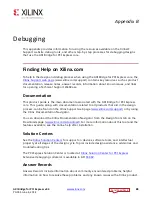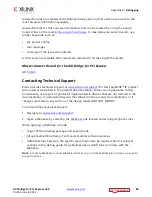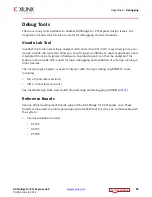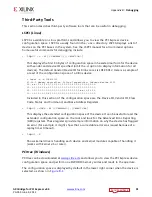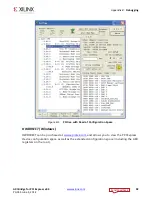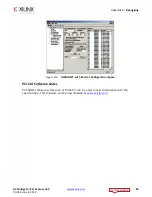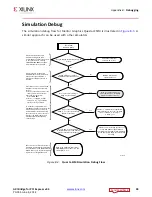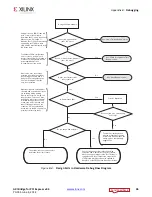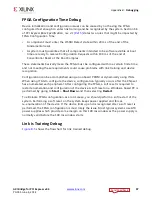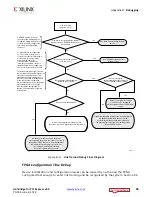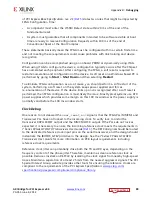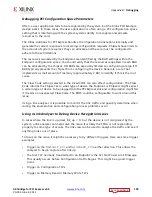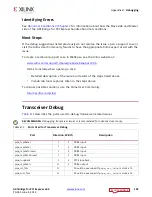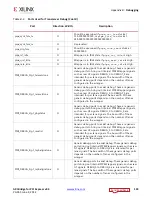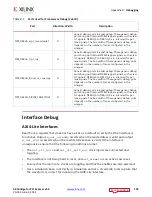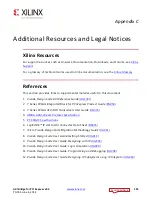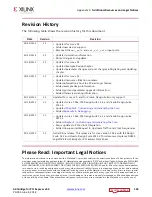
AXI Bridge for PCI Express v2.4
97
PG055 June 4, 2014
Appendix B:
Debugging
FPGA Configuration Time Debug
Device initialization and configuration issues can be caused by not having the FPGA
configured fast enough to enter link training and be recognized by the system. Section 6.6
of
PCI Express Base Specification, rev. 2.1
states two rules that might be impacted by
FPGA Configuration Time:
• A component must enter the LTSSM Detect state within 20 ms of the end of the
Fundamental reset.
• A system must guarantee that all components intended to be software visible at boot
time are ready to receive Configuration Requests within 100 ms of the end of
Conventional Reset at the Root Complex.
These statements basically mean the FPGA must be configured within a certain finite time,
and not meeting these requirements could cause problems with link training and device
recognition.
Configuration can be accomplished using an onboard PROM or dynamically using JTAG.
When using JTAG to configure the device, configuration typically occurs after the Chipset
has enumerated each peripheral. After configuring the FPGA, a soft reset is required to
restart enumeration and configuration of the device. A soft reset on a Windows-based PC is
performed by going to
Start
>
Shut Down
and then selecting
Restart
.
To eliminate FPGA configuration as a root cause, you should perform a soft restart of the
system. Performing a soft reset on the system keeps power applied and forces
re-enumeration of the device. If the device links up and is recognized after a soft reset is
performed, the FPGA configuration is most likely the issue. Most typical systems use ATX
power supplies which provide some margin on this 100 ms window as the power supply is
normally valid before the 100 ms window starts.
Link is Training Debug






